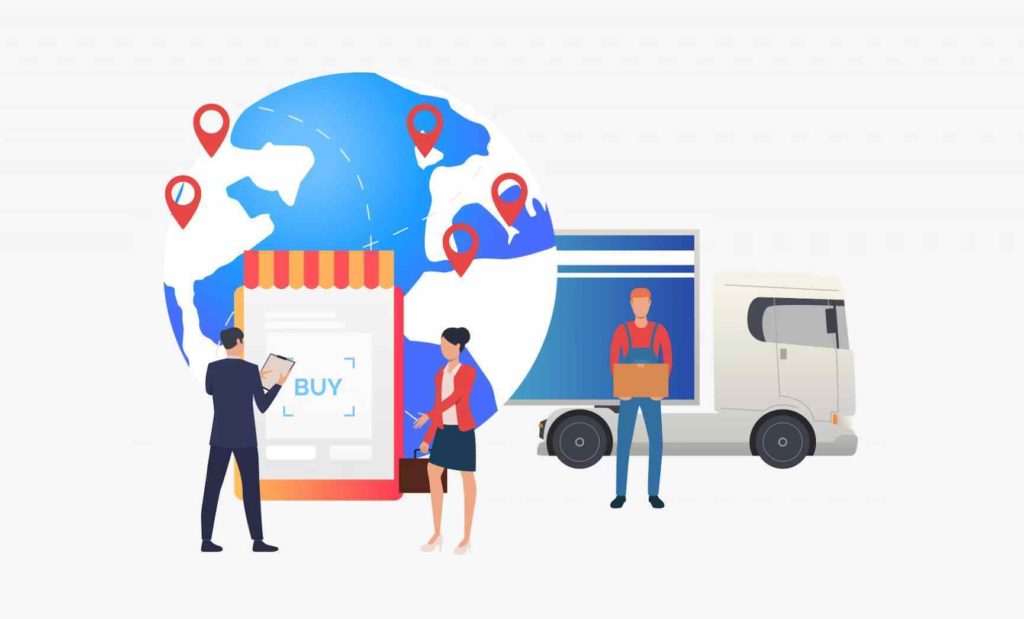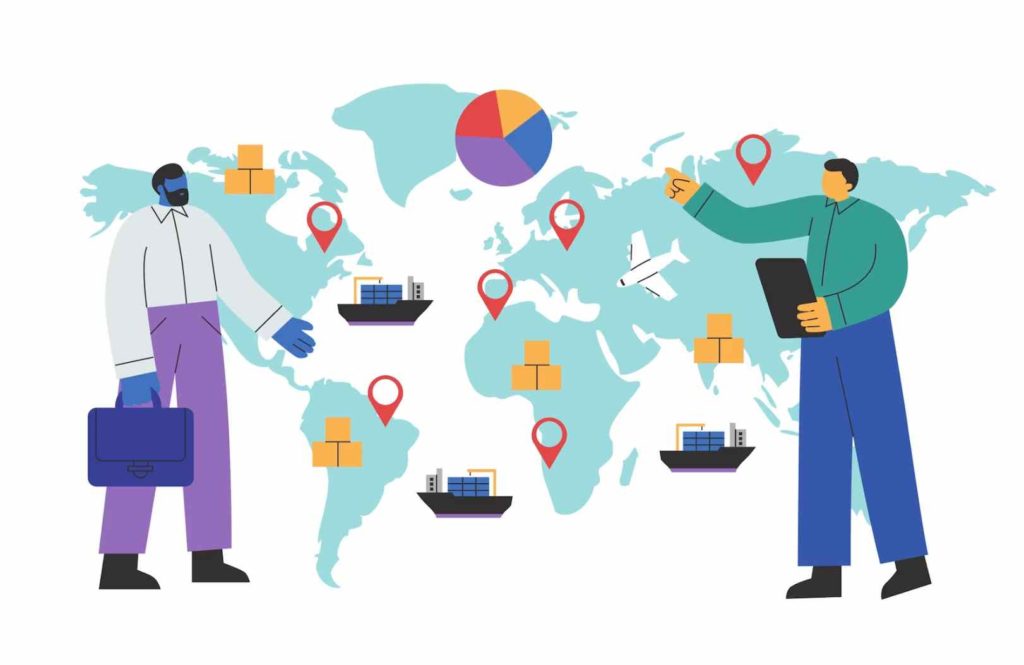Omnichannel Distribution: Definition, Objectives, and Tools

In this article, we will delve deep into the concept of omnichannel distribution and its growing significance for mobile professionals. We will present to you the benefits of this strategic approach and how it can enhance your operational efficiency, optimize the customer experience, and set you apart from the competition. The ultimate goal is to assist you in finding the perfect software to implement a successful omnichannel distribution strategy.
- Understanding Omnichannel Distribution
- What is the Objective of Omnichannel?
- Benefits of Omnichannel Distribution
- Tools for Successful Omnichannel Distribution
- How to Choose the Right SaaS Solution for Your Sales Force
Understanding Omnichannel Distribution
Definition of Omnichannel Distribution
Omnichannel distribution can be defined as a strategic approach aimed at providing a seamless and consistent shopping experience to customers, regardless of the sales channel used. Omnichannel distribution seamlessly integrates these channels in an interconnected manner, allowing customers to transition from one channel to another without encountering disruptions in their purchasing journey.
Fundamental Principles of Omnichannel Distribution
- Seamless Integration of Sales Channels: Omnichannel distribution relies on the smooth integration of physical and digital channels. This means that customers can start their shopping journey online, continue in a physical store, and complete their purchase through a mobile app. The goal is to provide a uniform and frictionless experience, regardless of the customer’s chosen touchpoint.
- Centralization of Data: By consolidating information from various channels, businesses can gain a comprehensive view of each customer, enabling them to personalize interactions and provide relevant recommendations. Centralizing data also facilitates inventory and order management, avoiding issues of overstocking or stockouts.
- Consistency in Customer Experience: Omnichannel distribution aims to offer a consistent and harmonious customer experience, regardless of the channel used. This means that customers can expect to find the same products, prices, and promotions, whether online or in-store. Consistency in the customer experience builds trust and fosters brand loyalty, ultimately promoting business growth.
By adopting an omnichannel approach, businesses can reap several benefits, such as better understanding customer needs, increased sales, and improved brand loyalty. Moreover, by integrating sales channels, companies can enhance operational efficiency and reduce costs associated with managing multiple isolated channels.

What is the Objective of Omnichannel Distribution?
By offering a seamless and consistent shopping experience across all distribution channels, omnichannel distribution aims to meet the expectations of modern consumers who seek a smooth and personalized buying experience. This contributes to enhancing customer satisfaction and fostering loyalty.
Omnichannel distribution enables mobile professionals to reach a broader audience by being present on multiple sales channels. This increases sales opportunities and optimizes the overall profitability of the business.
By providing a consistent and frictionless experience, mobile professionals can enhance the trust and loyalty of their customers. Satisfied customers tend to return and recommend the business, leading to customer retention and generating recurring sales.
Omnichannel distribution allows for the collection and analysis of customer data from different channels. This provides mobile professionals with a better understanding of preferences, buying behaviors, and specific needs of their customers. Such valuable insights enable personalizing offers and providing relevant recommendations.
With the evolving consumer habits and the emergence of new sales channels, omnichannel distribution empowers mobile professionals to remain competitive and adapt to changing market expectations. This enables them to offer a modern shopping experience and stand out from the competition.
Advantages of Omnichannel Distribution
- Enhanced Customer Experience
By enabling consumers to seamlessly transition between channels, whether online or physical stores, you offer a smooth and consistent experience. Customers can research products online, make purchases in-store, and handle returns or exchanges through various channels, based on their preference. This enhances customer satisfaction and promotes brand loyalty.
- Maximized Sales Opportunities
Omnichannel distribution also maximizes sales opportunities. Being present on multiple channels allows you to reach a broader and diverse audience. Customers can discover your business online, visit your physical store, or purchase products through distribution partners. This creates multiple touchpoints with consumers and increases conversion chances. Moreover, by integrating sales channels, you facilitate impulse buying and encourage upselling.
- Optimized Inventory and Logistics
Through omnichannel distribution, you can optimize inventory and logistics management. Having an overview of your stock across all channels allows for better demand forecasting and avoidance of stockouts. Additionally, you can implement flexible delivery systems such as in-store pickup or same-day delivery to meet consumer expectations for speed and convenience.
- Data Collection and Personalization
Omnichannel distribution also provides valuable data collection opportunities. By tracking customer interactions across different channels, you can gather insights into their preferences, buying habits, and behaviors. This data can be utilized to personalize the customer experience by offering targeted offers and personalized recommendations. This strengthens customer engagement and increases retention possibilities.
- Adaptability to Market Changes
By diversifying your sales channels, you are better prepared to navigate economic fluctuations, technological advancements, and changes in consumer behavior. You can adjust your distribution strategy accordingly and position yourself competitively in the market.

Les outils pour une distribution omnicanale réussie
Les fonctionnalités clés
L’une des principales fonctionnalités d’un logiciel de gestion omnicanale est la capacité à centraliser les données clients. Cela permet à votre entreprise d’avoir une vision à 360 degrés de chaque client, en regroupant les informations provenant de différents canaux de vente. Grâce à cette centralisation, vous pouvez mieux comprendre les besoins, les préférences et les comportements d’achat de vos clients, ce qui vous permet de personnaliser vos interactions et de proposer des offres ciblées.
Un autre aspect de la distribution omnicanale est la gestion des stocks. Grâce à un logiciel de gestion adapté, vous pouvez synchroniser vos stocks en temps réel sur tous les canaux de vente. Cela signifie que chaque fois qu’une vente est effectuée, que ce soit en ligne ou en magasin, votre système de gestion met automatiquement à jour les niveaux de stock. Ainsi, vous évitez les ruptures de stock et pouvez proposer à vos clients des produits disponibles, quel que soit le canal de vente choisi.
La gestion des commandes sur plusieurs canaux peut être un véritable défi logistique pour les entreprises. C’est là qu’intervient un logiciel de gestion omnicanale. Il vous permet de gérer et de traiter les commandes provenant de différents canaux (en ligne, en magasin, par téléphone, etc.) à partir d’une seule plateforme. Vous pouvez suivre facilement chaque commande, gérer les expéditions, et assurer un suivi précis de chaque étape du processus, garantissant ainsi une expérience client fluide et sans accroc.
Les différents types de logiciels disponibles sur le marché
Sur le marché, vous trouverez différents types de logiciels adaptés à la distribution omnicanale. Les systèmes de gestion d’entrepôt vous aident à gérer efficacement vos stocks et à optimiser les opérations de votre entrepôt. Les plateformes de commerce électronique vous permettent de créer et de gérer votre boutique en ligne, en intégrant les fonctionnalités de distribution omnicanale. Les outils de CRM (Customer Relationship Management) vous aident à gérer les relations avec vos clients, en suivant leurs interactions sur tous les canaux.
Nomadia vous propose son CRM SFA pour optimiser votre distribution omnicanale !
Comment choisir la solution SaaS adaptée à votre force de vente
Chaque entreprise a des besoins uniques en matière de distribution omnicale. Prenez le temps d’analyser les caractéristiques de votre force de vente, les canaux de vente utilisés et les fonctionnalités requises pour une gestion optimale. Identifiez les défis auxquels vous faites face et les objectifs que vous souhaitez atteindre.
La distribution omnicale évolue rapidement et il est essentiel que votre solution SaaS puisse s’adapter à ces changements. Optez pour une plateforme flexible et évolutive, capable de prendre en charge différents canaux de vente et de s’intégrer facilement avec d’autres systèmes déjà en place.
Assurez-vous que la solution SaaS offre les fonctionnalités essentielles pour une gestion efficace de la distribution omnicale. Cela peut inclure la gestion des stocks en temps réel, la synchronisation des données entre les canaux de vente, la gestion des commandes et des retours, ainsi que des outils de reporting avancés.
Une solution SaaS intuitive est essentielle pour faciliter l’adoption et l’utilisation quotidienne par votre force de vente. Optez pour une interface facile à prendre en main, permettant aux utilisateurs de naviguer aisément entre les différentes fonctionnalités et de gagner en productivité.
La distribution omnicale implique la gestion de données sensibles, telles que les informations clients et les données de paiement. Veillez à ce que la solution SaaS offre des mesures de sécurité robustes pour protéger ces données et se conformer aux réglementations en vigueur, telles que le RGPD.
Lorsque vous choisissez une solution SaaS pour votre force de vente, il est important de bénéficier d’un support client réactif et compétent. Vérifiez les options de support proposées, telles que la disponibilité d’une assistance téléphonique ou d’un chat en direct, ainsi que la réputation du fournisseur en termes de service client.
